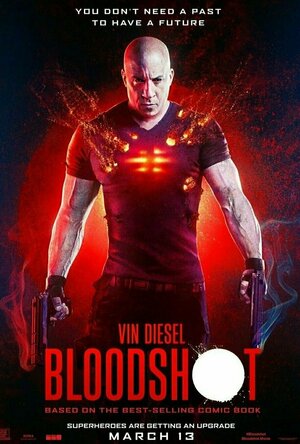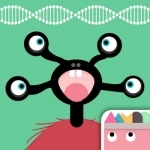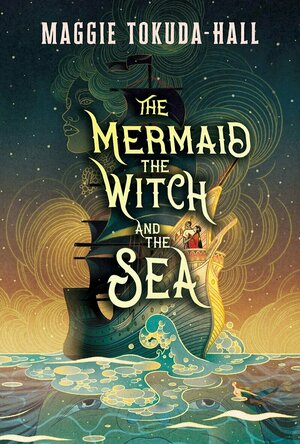Emma @ The Movies (1786 KP) rated Bloodshot (2020) in Movies
Mar 21, 2020
After a successful operation, soldier Ray Garrison has come home to take his beautiful wife of a well deserved break. What he doesn't realise is that he's being tracked by a team who are looking for information, and they'll do anything it takes to get it.
Waking up in a high tech lab with no memory Ray discovers that his body has been donated to a company after his death. RSC are pioneers in enhancements to the human body, taking people who might otherwise be given up on and giving them a new lease of life.
When you've had one of those days and you need some gratuitous violence you can't really go wrong with a Vin Diesel films... can you?
I can't say I ever go into films like this expecting a "masterpiece" of cinema, I was just hoping for some solid entertainment and it certainly gives that.
Enhanced humans always offer that level of escapism that allows for a few faux pas to come across as less obvious, but the trailer made me raise an eyebrow. The effects didn't look great in the few snippets we got, luckily, on seeing the final product thought I was pleasantly surprised. The close up action that wouldn't require major stunts were excellent and believable, I didn't feel like there were any holes to pick... until the elevator scene. You'll clearly see the graphic work and it's a real shame it is so bad in comparison to the rest, there's also a terrible chase scene that has no natural movement in it either.
It's not often Vin strays from a certain type of character so we get exactly what you'd expect from his portrayal of Ray Garrison, a driven "bad guy" with a reason to be mad at a lot of stuff. It's not groundbreaking but it's always fun to see.
Eiza Gonzalez as KT gets a good range to work with, she gives us an excellent character with a reasonable amount of depth compared to her counterparts... who I had to call Legs and Eyes in my notes because at no point did I notice if they had names or not.
Our bad guy was obviously Guy Pearce seems about right for him. It wasn't really out of his comfort zone either though and despite him being great as Dr Emil Harting it wasn't really pushing any boundaries.
Visually this film is pretty good, the fight sequence we get glimpses of during the trailer uses colour well and has some amusing little touches in it. A bit of humour and some shots that I'd associate with horror/thriller movies build that excitement and tension well. There's also a well edited montage that's used to great effect to show the audience an event succinctly without it becoming boring, which is always greatly appreciated in films.
There are a few comments I have but they definitely constitute spoilers so I'll keep them to myself, but there's nothing that majorly added or detracted from the film for me beyond what I've mentioned already.
As I said at the beginning, it's nice to have a different comic book entity on our screens and I think the story is a good one, we're thankfully given an interesting set of characters to focus on and that helps the story stay a little lighter. You know how I like an origin tale though and this seems a bit short on that bit of discovery. I've got the graphic novel to read though so I'm interested to see where it deviates. Despite its minor (and slightly major action CGI) issues I really enjoyed Bloodshot, Ray's anger issues really helped get out some frustration.
Originally posted on: https://emmaatthemovies.blogspot.com/2020/03/bloodshot-movie-review.html

Children's Bible Daily Prayers for Family & School
Book and Reference
App
Children's Prayer is an app for Christian families, teachers and catechists with kids of all ages....

Redfin Real Estate
Lifestyle and Business
App
Take it from our users: “It’s the only real estate app you’ll need.” See every nearby home...

Moment Diary (journal)
Lifestyle and Business
App
Great news! This is a private diary that makes notes with timestamps! You can take a short note and...
Lottie disney bookworm (1056 KP) rated The Mermaid, the Witch and the Sea in Books
Sep 20, 2020
I chose this book simply based on the synopsis and the gorgeous cover art. I expected it to be a standard YA read, perhaps edging on middle grade but wow was I wrong! This novel contains all the gritty bits of a Pirate’s life and is as far from Neverland pirates and mermaids as you can get.
The Mermaid, the Witch and the Sea centres around the relationship between a high-born, queer, Japanese-inspired noblewoman, Evelyn and a pirate named Florian who is secretly a girl named Flora, disguising themself in order to gain the respect of their crew mates.
Evelyn and Florian instantly capture the heart of the reader. They are such an unlikely match and from completely different worlds but the way that Maggie Tokuda-Hall throws these two characters together and alternates chapters between their perspectives is so compelling. The secret attraction and the pining between Evelyn and Florian can literally be felt through the pages. These two are guaranteed to stay with you long after the book is finished.
In fact, the majority of Tokuda-Hall’s cast of characters are so well developed: we have Rake, the first mate who is a very closed character and keeps his own intentions close to his chest for most of the novel. We have a gender-fluid Pirate Supreme, an imperialist noblewoman who can kick ass and Flora’s brother Alfie, a tortured soul whose traumatic past is alluded to often.
The portrayal of mermaids in the novel is nothing short of inspired: hunted and captured for the properties their blood possesses, mermaids are quite ugly when imprisoned by pirates. These mythical creatures that are renowned for their beauty are only conventionally beautiful in the presence of their loving mother: The Sea. The Sea in turn will do whatever she can to protect her children, and will always reward those who help.
The other pirates are, as you would expect, a group of shady characters but they do not fade into the background at all. Tokuda-Hall reveals right from the beginning the true intentions of this crew and it creates an underlying tension throughout the whole voyage upon The Dove. The twists, secrets and revelations onboard that ship are captivating and create a page-turning first half of the book.
I will say that during the middle of the book, mainly during “The Witch” section, the pace slowed dramatically and it just didn’t flow as much.
I almost wanted more treachery and more suspense from the witch, more struggle by Evelyn and, dare I say, more pining from Evelyn and Florian. Their relationship up to this point had been so intense and slow burning that it almost seemed to cool a little.
I also feel that not quite enough was made of Evelyn’s discovery about the real reason behind her voyage. It was almost a convenient way for that side of her story to be resolved. Similarly, with Florian/Flora; their evolution from Pirate to Witch seemed quite acceptable and tame.
These factors, in my opinion, affected the ending of the novel where everything seemed quite rushed in its efforts to tie up all loose ends. Please don’t misunderstand, I LOVED the ending and how Evelyn and Flora/Florian finished their journey. I even shed a few tears. However, it was the lead up to this that just seemed too convenient and too quick.
Overall this is a wonderfully dark pirate novel that instantly creates a world full of magic and wonder whilst tackling the issues of identity, colonialism, homophobia, poverty and rape. A world where gender-fluid and queer characters fight against injustice alongside endangered mermaids and the Sea is to be respected almost as a deity.
I cannot believe that this is merely Maggie Tokuda-Hall’s debut novel! I cannot wait to see where she takes us next!
Andy K (10823 KP) rated Electric Dreams (1984) in Movies
Oct 13, 2019
Miles is an unorganized, nerdy architect who is delighted to discover a young, beautiful cellist moving in to the apartment above his sparse decorated pad in San Francisco. At the same time, a work colleague tells Miles he should get himself organized so he doesn't miss meetings spending all his time working on a new earthquake=proof brick, his dream pet project. Miles heads to his local electronic store (80s version) and gets talked into buying one of these "new" personal computers which everyone seems to be getting.
After some initial difficulty during set up, Miles decides to fully jump in to the PC world and not only sets up his new toy, but decides to have it fully integrated into his apartment including running his lights, door locks and appliances. He then thinks it would be a good idea to do a mass download of information for his work servers to beef up his own unit's capacity. He quickly realizes this is an overload to his machine when it starts to buzz and flash. In a panic, he douses the machine with some champagne to cool it off inadvertently giving it the spark of "life".
His new machine works quickly to understand its new world around including listening and harmonizing music with the beautiful neighbor upstairs. This leads to the two town house cohabitants developing a relationship. This does not sit well with the PC eventually as "he" has now also evolved to the point where he wants to understand love. Tensions escalate and there is a confrontation for the ultimate fate of the relationships and who will ultimately get the girl.
Since it had been probably 30 years since I had seen Electric Dreams, one of those guilty pleasures from the 80s, I was extremely anxious to rewatch; however, was also worried a new viewing in my adulthood would ruin the magic I had remembered from my youth. I couldn't have been more wrong.
The first thing I had forgotten was all the humor of the film including those awkward moments when Miles and the computer where getting to know each other and the goofy dialogue. Also, it's funny how I read a lot of the functions the computer performed had to be simulated at the time since home PCs were still pretty new to everyone at that point, but now those functions are fairly commonplace including the aforementioned "Smart Home" features among other things.
Yes fine, there are plenty of 80s staples present almost immediately like music montages, bad hairdos, leg warmers and boom boxes, but that still gives the movie charm. After thinking about it, there were elements from other 80s classics like Weird Science, WarGames, and a lot of Short Circuit where an AI was learning about itself. Who remembers Max Headroom?
The soundtrack for the film is also front and center with much of it playing a key role in the budding relationship between Miles and his musical love interest, but it works well and still holds up.
I also have to mention Virginia Madsen. I looked up she was 23 when she made this film (she looked like she was 18), but still looks as remarkable as she did then (80s crush speaking here).
I'm sure I probably still revere this movie more than the people who actually made it, but I can handle that.

Sign Docs - Best Digital Signature & Business Document Manager App for iPad
Productivity and Business
App
##### Special discounted price for a limited time ##### ✓ Featured in iTunes 'New & Noteworthy'...

TrialPad ™
Business and Productivity
App
Organize and access all your evidence more efficiently, and present more effectively with the top...

My Dictionary Pro
Education and Entertainment
App
Do you want to learn a foreign language quickly? A unique program for memorizing words will help you...



